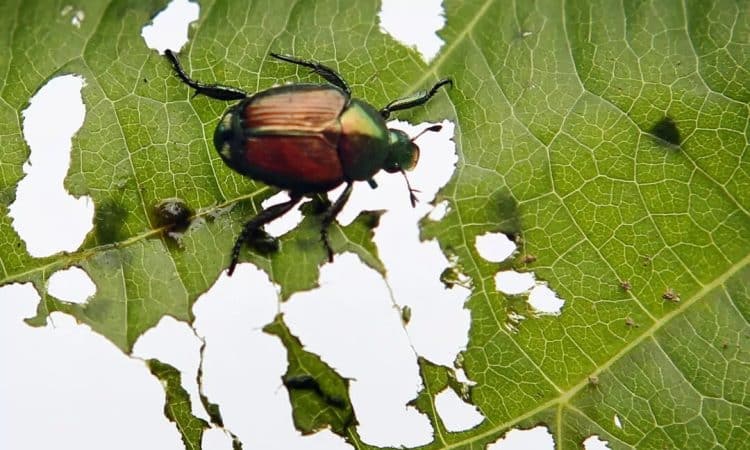
The Species
The Japanese beetle (Popillia japonica) closely resembles the cockchafer. About a centimeter long, it is distinguished by its green shield, coppery elytra, and white side hairs. Native to Japan and its environs, this beetle was introduced to the United States a century ago. In Europe, it was found in the Azores in the 1970s, and since 2014 in Italy and 2017 in Ticino.
The Problem
The Japanese beetle is a gluttonous beetle that causes significant damage to vegetation, both in the larval and adult stages. The larvae live in the soil, feeding on the roots of grasses and other plants, devastating lawns and plantations. As adults, the beetle devours tree leaves, often from the crown down to the lower branches. 400 species of trees and shrubs have been recorded among its victims, including apple trees and vines.
The beetle’s feeding habits result in severe defoliation and can severely impact agricultural production and ornamental plants. The widespread damage caused by the Japanese beetle makes it a major pest, necessitating vigilant monitoring and control measures to protect affected areas.
Control Measures
Efforts to control the Japanese beetle include biological controls, such as introducing natural predators, and chemical treatments. Regular monitoring and early intervention are crucial in preventing the spread of this invasive species.
By understanding the biology and impact of the Japanese beetle, gardeners and farmers can implement effective strategies to manage and mitigate the damage caused by this voracious pest.

